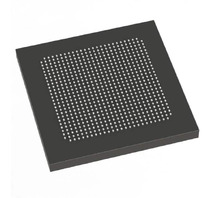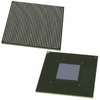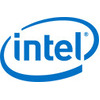Manufacturer Part Number
5AGZME1E3H29C4N
Manufacturer
Intel
Introduction
The Intel Arria V GZ is an embedded FPGA designed for high-performance applications, offering extensive logic elements and RAM in a compact form factor.
Product Features and Performance
220,000 logic elements for versatile programming and implementation
10,377 LABs/CLBs allowing for intricate and dense logic designs
Total RAM Bits of 15,282,176 for high-capacity data storage and processing
342 I/O ports for extensive peripheral and external interface support
Operating temperature range from 0°C to 85°C, suitable for a broad range of environments
Product Advantages
High logic element density for complex digital computations
Ample RAM for data-intensive applications
Wide I/O count enhances connectivity and integration capability
Low supply voltage (0.82V ~ 0.88V) enables power-efficient operation
Key Technical Parameters
Number of LABs/CLBs: 10377
Number of Logic Elements/Cells: 220000
Total RAM Bits: 15282176
Number of I/O: 342
Voltage Supply: 0.82V ~ 0.88V
Operating Temperature: 0°C ~ 85°C
Package / Case: 780-BBGA, FCBGA
Supplier Device Package: 780-HBGA (33x33)
Quality and Safety Features
Manufactured by Intel, ensuring high reliability and performance standards
Rigorous quality control processes to guarantee stability and safety
Compatibility
Surface mount technology (SMT) for compatibility with modern PCB assembly processes
Application Areas
High-speed computing, data processing, and specialized applications in telecommunications, automotive, industrial automation, and more
Product Lifecycle
Obsolete status, indicating the device is no longer in active production
Users should investigate replacements or upgrades for future designs
Several Key Reasons to Choose This Product
Industry-leading performance and capacity for embedded FPGA applications
Intel's reputation for quality and reliability in semiconductor manufacturing
Broad application potential across multiple high-tech industries
Detailed technical specifications supporting advanced design requirements
Despite being obsolete, may still offer value for specific legacy applications or systems where upgrading is not feasible




 5AGZME3E3H29C4NALTERA
5AGZME3E3H29C4NALTERA 5AGZME1E2H29I3LNIntel
5AGZME1E2H29I3LNIntel 5AGXMB7G4F40C4NIntelIC FPGA 704 I/O 1517FBGA
5AGXMB7G4F40C4NIntelIC FPGA 704 I/O 1517FBGA